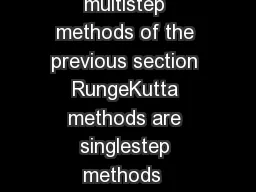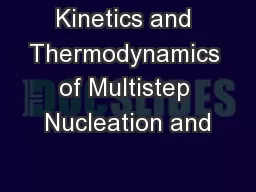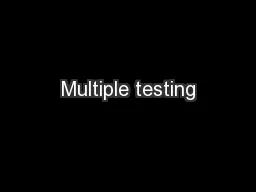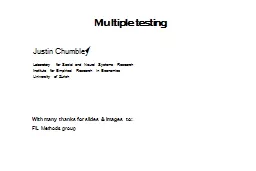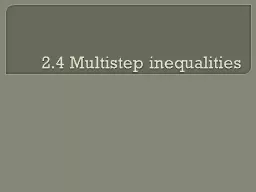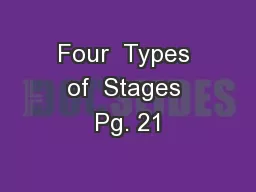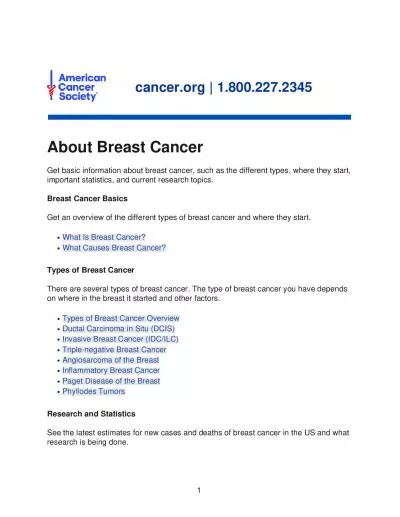PDF-RungeKutta Methods In contrast to the multistep methods of the previous section RungeKutta
Author : jane-oiler | Published Date : 2014-12-20
They are motivated by the dependence of the Taylor methods on the speci64257c IVP These new methods do not require derivatives of the righthand side function in
Presentation Embed Code
Download Presentation
Download Presentation The PPT/PDF document "RungeKutta Methods In contrast to the mu..." is the property of its rightful owner. Permission is granted to download and print the materials on this website for personal, non-commercial use only, and to display it on your personal computer provided you do not modify the materials and that you retain all copyright notices contained in the materials. By downloading content from our website, you accept the terms of this agreement.
RungeKutta Methods In contrast to the multistep methods of the previous section RungeKutta: Transcript
Download Rules Of Document
"RungeKutta Methods In contrast to the multistep methods of the previous section RungeKutta"The content belongs to its owner. You may download and print it for personal use, without modification, and keep all copyright notices. By downloading, you agree to these terms.
Related Documents

